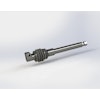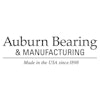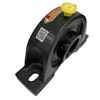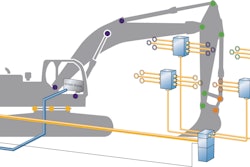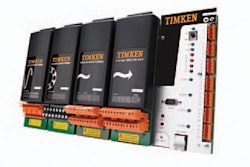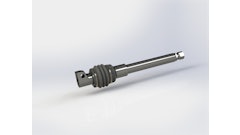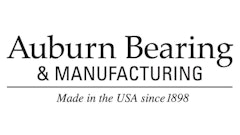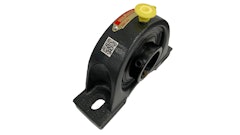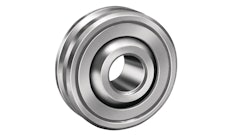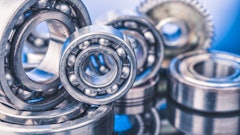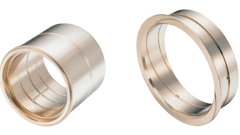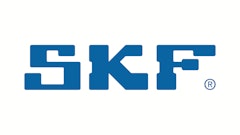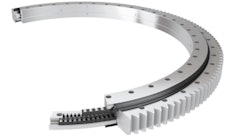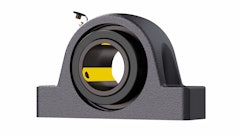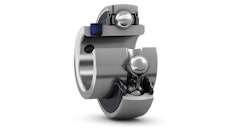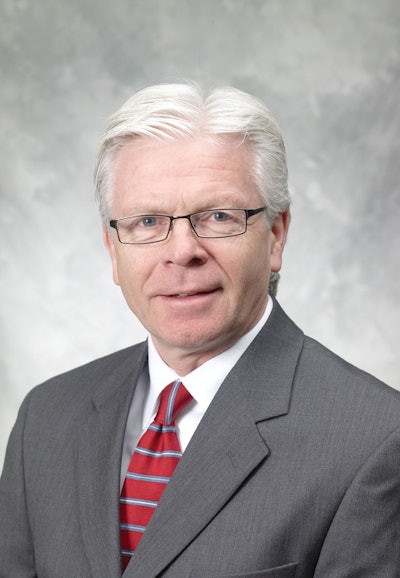
1. SKF recently realigned its company into Global Business Units, with off-highway products being its own Global Business Unit. What was the reasoning behind this decision, and what benefits have you seen from this?
Don Poland: The SKF realignment was to focus on managing the total life cycle of the customers' assets and will deliver a full range of products, services and solutions to both OEMs and end-users within different industries, and to sharpen the knowledge in engineering by specializing in an industry. The Off-Highway Business Unit was formed within the Business Area, Strategic Industries. Each of the Strategic Industries units combines the critical operations, from engineering and key account sales to manufacturing, under one global management team. As head of the Off-Highway team, I can more quickly respond to changing equipment needs, balance our global manufacturing footprint and leverage our global knowledge to help our customers as they expand and develop around the world.
2. SKF is attempting to stop focusing on OEM and aftermarket as separate customers. Why?
Poul Jeppesen: We are taking a more holistic approach that includes and considers the needs of both equipment builders and the users of the equipment. By taking what we call the SKF Asset Lifecycle Management approach, we utilize the knowledge of both our design teams and our field application specialists to create next-generation designs that reflect real world conditions, and to recommend maintenance practices that maximize the equipment's life and reliability. By looking at Total Cost of Ownership (TCO), we can show both the OE and end-user customer how to maximize the value of the equipment and deliver the lowest possible lifecycle cost.
3. Tell us about BeyondZero.
Jeppesen: BeyondZero is a company initiative to reduce our own environmental footprint while also offering special products and services that help our customers to reduce their footprint. We are actively working to reduce the CO2 emissions in our own operations by 5% per year, regardless of production increases, and have been meeting this goal since 2006. For our customers we have always strived to help reduce friction through our bearing designs and internal geometries, plus proper use of sealing and lubricants; earlier this year, we focused our efforts by launching the SKF BeyondZero portfolio. These are products and services that measurably reduce environmental impact, such as reducing fuel consumption for vehicles or improving overall efficiency by enabling hybrid/electric drives. Products in this portfolio are validated by lifecycle assessments and reviewed annually by KPMG. Our goal is to quadruple the size of this business over the next four years. Successes in this area include the E2 bearing line, which reduces bearing friction by 30 to 50%, and new low friction seal designs which reduce friction by over 50%. We work with our customers to help them translate these reductions into reducing TCO (like reducing fuel consumption) while meeting modern environmental standards. It's important to our customers that they can cost-justify the use of these "greener" products.
4. As a global company, in which regions are SKF seeing positive growth (for off-highway) and are there regions of interest for expansion?
Poland: The largest market for construction machinery is China. Even with the current economy slow-down, the Chinese market is expected to grow since the underlying drivers for growth are in place: population and GDP growth. India and Latin America are also important from a growth point of view, but the total volumes are lower than China's. Still, new machine designs are driven from the technology leaders' engineering centers in Japan, U.S. and Europe, which is why we continue to invest in high-level engineering in these regions. From a production standpoint we have recently added bearing factories in Dalian, China and Ahmedabad, India.
5. What off-highway technologies are on the horizon that are exciting opportunities for SKF?
Poland: Machine fuel consumption (cost) and emissions control are the two main drivers for technology development today and in the foreseeable future. Reaching significant impact on these requires a change of engine and drivetrain concepts, and of driver support systems. This is why machine builders and system suppliers are developing hybrid/electric drives, newly optimized drivetrain systems and considering introducing solutions like turbochargers as standard. SKF, working closely in development with these design centers, helps enable this evolution. Our extensive experience in railway (traction motor/electric drive), our advanced system modeling and simulation tools, and even our development within racing provides construction machine manufacturers with the knowledge needed to leapfrog their product development steps.
6. How does the upcoming U.S. election affect SKF business decisions?
Jeppesen: The Production Tax Credit, which is due to expire this year, and economic uncertainty has adversely affected the overall renewable energy business in the USA. SKF recognizes the global need to reduce CO2 emissions and we are proud to have recently become a member of the World Wildlife Fund (WWF) Climate Savers program. To achieve these goals requires fully developing alternate energy forms including renewables, and these growing industries need some type of consistent and reliable support to help them become more efficient. As a global manufacturer with considerable knowledge and technology to aid the U.S. market, we need a stable demand situation to justify us making the production investments to supply this product locally.
7. What is SKF most excited about for the next 5 years, both economically and technologically?
Jeppesen: We are excited about the willingness of many of our customers to involve us earlier in their design process in order to tackle their challenges. This enables us to combine multiple technologies to deliver breakthrough performance. We can then deliver integrated sub-assemblies and systems that are far more than just delivering components. One example of this is the Agri-Hub bearing unit for disc harrows that provides one easy-to-install assembly for the equipment builder, while offering the end customer extended life while eliminating field re-lubrication. In applications that previously used hydraulic or mechanical actuation, we can provide electromechanical actuators to provide improved ergonomics, virtually maintenance-free performance in the field and reduced environmental impact by mitigating the risk of hydraulic fluid leakages.
By considering the overall product lifecycle we will continue to make our products more reliable and at the same time more efficient, improving productivity while creating savings for our customers and reducing environmental impact. Driving innovation through new materials, coatings and designs are helping us do this today, while the broader inclusion of sensor technology will be key to our next generation of smart solutions.
